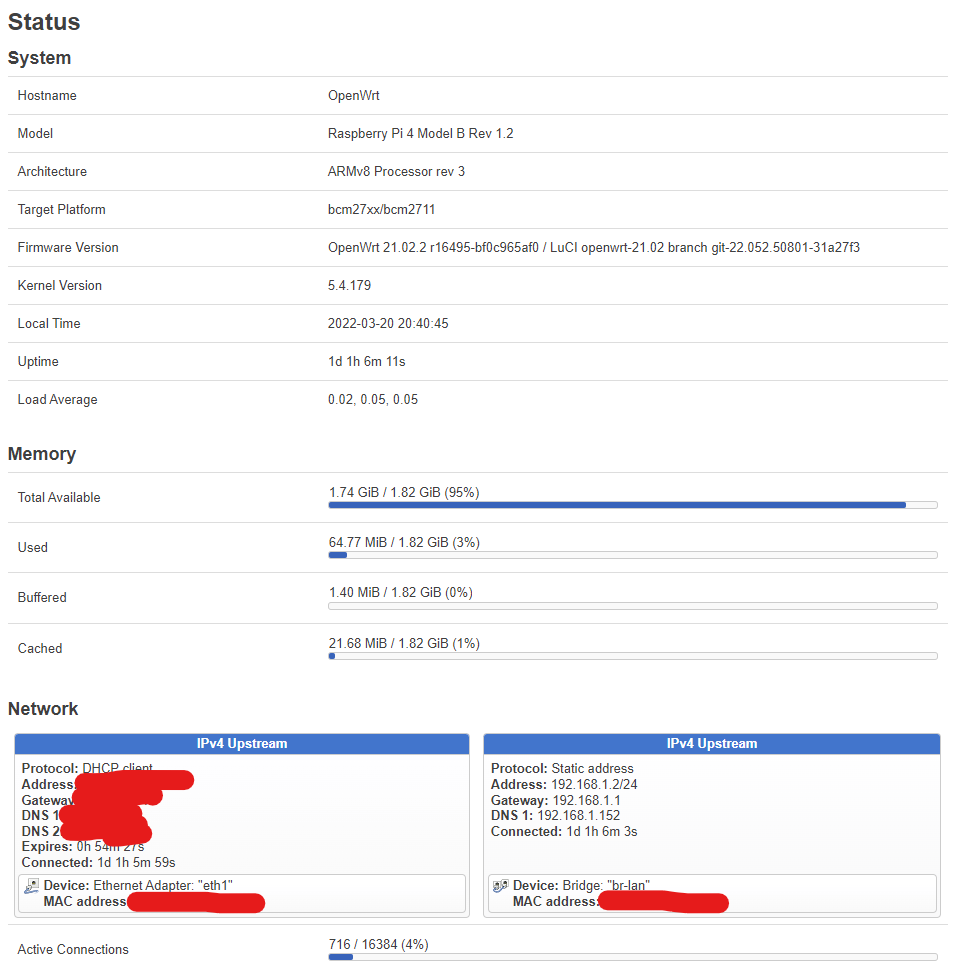Introduction ¶
So, you have an internet connection. You are using [insert-brand-name-here] router. You want more control over your network and/or you are curious if it is possible to run/manage a network from a Raspberry Pi.
The short answer is yes. Yes, you can.
This post is a preview of many blog posts to come showing how I used the awesome Raspberry Pi to makeshift router improvements.
My circumstances ¶
Below is an outline of my network/connection prior to implementing OpenWrt:
- Internet connection using ISP-provided router (in Bridge mode)
- NETGEAR – Orbi RBK843S AX5700 WiFi 6 Mesh System (router & Wi-Fi)
- And a couple of these TP-Link TL-SG108 | 8 Port Gigabit Unmanaged Ethernet Network Switch (For various systems including PCs/game consoles)
- Raspberry Pi 4 with Pihole for DNS ad blocking & DHCP
- Have a total of ~60 devices connected to the internal network
- A mix of Wi-Fi & Ethernet connected devices
Why? ¶
Well, the above was working fine. Perfect most would say.
The Orbi interface and custom Pihole setup worked amazingly well. I just wanted more! As in, more configurability, more stats, more open.
My research concluded with pfSense or OpenWrt being the route I was going to go. However, as some of you may know, pfSense will not work on a Raspberry Pi. So, my choice was made for me, we will use OpenWrt to give me a more controllable internet.
Conclusion ¶
Yes, I am starting this with a brief conclusion on how it all went.
Did it go well? Probably… Yes, well. Just a few little things to contend with when trying to set it up over the space of a week to get it working well.
First off, speeds are probably a concern for some reading this. The WAN is USB3 > gigabit Ethernet to my Xfi router from Comcast Xfinity. LAN is handled by the gigabit port on the pi itself.
Not 2.5 gigabit no, but for our household. It is working well.

Over the coming weeks, there will be posts expanding on the process including but not limited to:
- Adguard Home
- Bufferbloat improvements
- Static Leases
- cloudflared (Cloudflare Tunnel) usage
Follow me on Twitter to know when I release new posts.